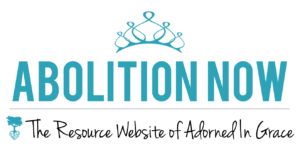
Before her 10th birthday, Shelly’s happy family was ripped apart by her father’s affair.
The shockwaves of the resulting divorce left her mother so paralyzed, that Shelly became caretaker – cooking and cleaning for four younger siblings. While her mother withdrew into her own emotionally tortured world, Shelly was left with what most every kid thinks they want …no rules or boundaries. By age 12, she began spending her time hanging out with friends, often drinking till late into the night; hoping to wash away her unwelcome responsibilities at home….
From Runaway to Redemption
Before her 10th birthday, Shelly’s happy family was ripped apart by her father’s affair.
The shockwaves of the resulting divorce left her mother so paralyzed, that Shelly became caretaker – cooking and cleaning for four younger siblings. While her mother withdrew into her own emotionally tortured world, Shelly was left with what most every kid thinks they want …no rules or boundaries. By age 12, she began spending her time hanging out with friends, often drinking till late into the night; hoping to wash away her unwelcome responsibilities at home.
At age 13, Shelly ran away for the first time. After returning home, her mother attempted to enforce more stringent rules, but Shelly’s rebellion was already out of her control. When she was 14, she met a man, many years her senior, who began to pay her a great deal of attention – telling her how pretty she was and buying her new clothes. One day she left home and met him around the corner… the beginning of a nearly two-year descent into the world of human trafficking. She says he taught her “everything.” One afternoon, while he lounged in Montavilla Park, he sent her out to 82nd Ave. to perform her first act as a prostitute. After this first “john” pulled out a knife, assaulted her and cut off her shorts, she stumbled down the street. Seeing a man in a neighborhood washing his car, she asked for help…. He just turned away.
Eventually she made her way back to Montavilla Park where the pimp was waiting. For the next year or more, Shelly was transported up and down the I-5 corridor from Tacoma to LA several times. During this time of chaos, she resisted the sex trade system by not producing enough money and coming back from the streets with excuses.
Finally freed from her pimp, Shelly wound up traveling with a group of male musicians who treated her just as badly. One day in California, she returned to her room to find everything cleared out. With nothing left but the clothes she was wearing, she went looking for a familiar face – a guy she’d met at a party some time before. A short search led her to the apartment where they had met. Knocking on the door, she was greeted by a stranger who led her into a room of men with a large stockpile of drugs, which surprisingly she’d never used before. Once the door was locked behind her, the men demanded she snort a line of cocaine. Her resistance was met by a forceful blow to the back of her head with a gun. At that point, the girl complied with their request and spent the next week or two in a fog, being gang-raped and becoming dependent on drugs, as was the traffickers’ plan. When she was let out of the back room into the apartment and daylight, Shelly’s strong will served her well and she escaped her captors once again.
Another search led her finally to the guy she’d gone looking for, and she stayed with him in his trailer. Newly addicted, her daily routine was doing drugs. On one occasion, she overdosed and her throat began to close so she couldn’t breathe. As consciousness waned, she prayed to God for help. Her throat immediately opened up. She recognized God had not left her– but still He seemed far off.
Sometimes Shelly tried to think about her life a few years before, but often couldn’t remember who she really was. She’d been brainwashed, with a new name and identity imposed upon her by traffickers and pimps. Finally one day, in a moment of clarity, something told her she had to go home. While pondering her options, she was suddenly able to recall her dad’s 800 number and PIN (something she’d never memorized)… so she called and asked to come back. With a train ticket sent from her dad, she returned. Coming home ended her trafficking story, but then began years of struggle to overcome its effects.
Over the next number of years Shelly was in and out of bad relationships, had life- threatening dealings with gang members, was married, had a child, and divorced. Then she was raped, put that child up for adoption, and had a third child. Providentially though, during this time, she also began going back to church and, step by step, is allowing God to heal her hidden wounds. Shelly says that her background has made intimacy in relationships illusive, but she is learning. She continues to receive counseling and is now engaged to be married.
Most girls trafficked do not escape on their own. Shelly’s freedom is actually a story of God’s amazing grace and miracles. She beat the odds with her life, but it will take time for the Lord to heal the emotional scars left behind.
A few important facts about trafficking and its victims:
- Human trafficking reigns as the world’s second largest, fastest growing criminal industry.
- Researchers estimate the average pimp in the U.S. can make potentially as much as $200,000 a year off the sexual trafficking of a single girl.
- The I-5 corridor is known as the “West Coast track,” trafficking victims from Washington down to Mexico.
- Portland is one of the significant areas for trafficking activity.
- SARC has identified 200 trafficked victims in Portland, and fear there are likely far more unknown.
- Pimps will prey on vulnerable children where they are likely to be found: living on the streets as runaways, hanging out in public places, living in juvenile group homes, sitting alone during school breaks, or cruising internet chat lines.
- A runaway child is usually picked up by a trafficker within 48 hours.
- The average age of entry into trafficking is approximately 14 years old.
- Often trafficking victims are forcefully given drugs to cause addiction and subsequent dependence on pimps.
Something to think about:
As I worked with Shelly’s story, I couldn’t help but wonder, “What about the neighborhood man washing his car who refused to get involved and help a desperate 14 yr. old girl? What if he had been Jesus with skin on, and taken Shelly back to her family or a place of refuge where she could get real help and healing…. Could she have been saved the devastation of the next several years?” Will I risk brushing up against someone’s dark plight to get involved and save a life…? Will you?
Action:
There are many ways we can make a difference. Two organizations doing just that are Adorned in Grace and Door to Grace. Adorned in Grace sells donated new and used wedding gowns, formal wear and accessories, with all proceeds going to bring awareness, prevention, and safe shelter to the problem of sex trafficking. They also have a design studio, used as an outreach to at-risk girls in low-income neighborhoods. Door to Grace provides restorative care services and safe shelter for children who are survivors of commercial sexual exploitation.
Here are links to these ministries. Look for more about them in the February 15th blog.
p>
http://adornedingrace.blogspot.com/
http://www.doortograce.org/
The rest of the story….
In 1981, Starla Brown met a four-year-old Shelly at Community Bible Fellowship. Nearly thirty years later they reconnected in a most unusual way. Starla, a volunteer at Adorned in Grace, received a phone call to set an appointment to see wedding dresses there. Shelly was the caller, and after all those years, she recognized Starla’s voice and the time they’d spent together at Community Bible Fellowship. When meeting at the shop later in the week, Shelly was excited to learn the mission of Adorned in Grace, explaining that she was herself a victim of human trafficking. As she and her sisters pored over the dresses, they finally found two damaged choices that could be put together to make one perfect just for her. Shelly looked radiant and said she liked the idea of making a completely new dress out of two that were used and damaged because it reflected her story. Isn’t that just what God likes to do with all of us?
“He has sent me to bind up the brokenhearted, to proclaim freedom for the captives and release from darkness for the prisoners…. to bestow on them a crown of beauty instead of ashes, the oil of gladness instead of mourning, and a garment of praise instead of a spirit of despair.” (Isaiah 61:1,3)

